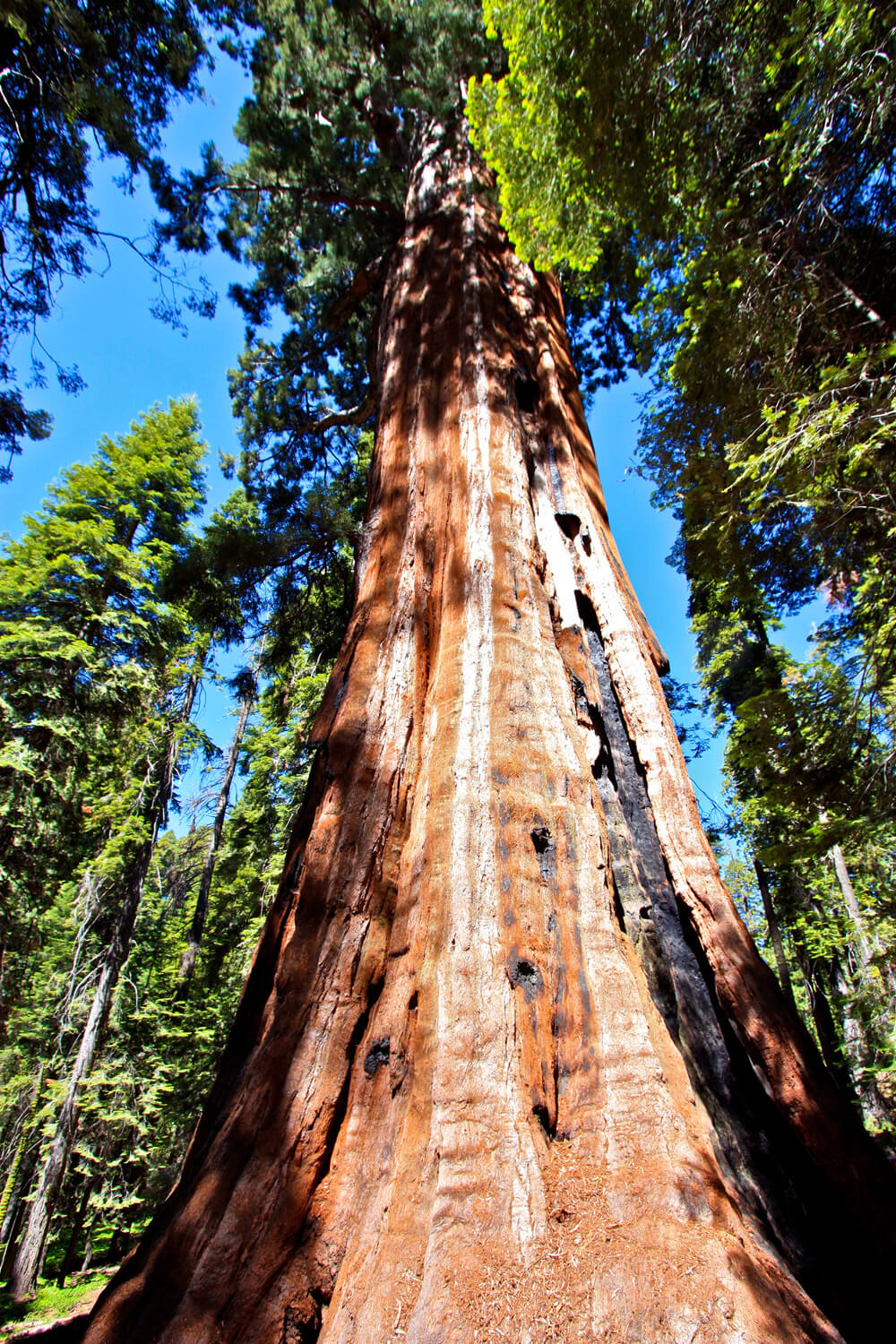Sequoia National Park
Located: California - Established: September 25, 1890
The Park and the General. Somewhere between 2,300 and 2,700 years ago, the sequoia giganteumknown as The General Sherman Tree planted its roots in what is now Sequoia National Park.
The General isn’t the tallest tree (275 feet tall), it isn’t the widest (the circumference at its base measures over 100 feet) or oldest tree; however, by sheer volume, it is the most massive living thing on earth!
General Sherman - the most massive living thing on earth!
But the General wasn’t always the worlds biggest. The Crannell Creek Giant Coastal Redwood near Trinidad, CA had that distinction of being up to 25% larger than the General…up until the 1940’s when it was cut down!
Saving the Big Trees. Nevertheless, we are fortunate to have had a small group of dedicated and persistent people who fought for the protection of these treasures in the face of adversity! Had it not been for the likes of folks like John Muir and virtual unknowns George W. Stewart and Frank Walker, the fate of these unique trees may have fallen into the hands of those wishing to cash in on these precious resources.
One of the best park signs we encountered while visiting our 13th park.
Getting there. Nestled amongst the western slopes of the Sierra Nevada Mountains, Sequoia is accessed via two highways. Hwy 198 enters the park from the southwest passing through Three Rivers, CA. From Fresno, CA, Hwy 180 takes you into Kings Canyon National Park where it forms the Generals Highway connecting Kings Canyon with Sequoia.
When to go. The park is open year round; however, snowy winter conditions can limit access to some areas of the park. Summers are crowded and advanced reservations for campgrounds are recommended.
The Walk amongst the Giants will astound you!
What to do. A Walk amongst the Giants is a “must do” at this park! The best way to experience these glorious trees is to walk about the Giant Forest. Almost forty miles of maintained trails wander through the sequoia grove. These trails are rated from easy to moderate.
Perhaps the most popular is the Congress Trail, an easy two-mile loop that begins and ends at the General Sherman Tree. Along the path, you’ll be treated to the President Tree, the House and Senate Groups and the McKinley Tree.
For a more ambitious hike, take the moderate 5.1-mile Trail of the Sequoias/Circle Meadow Loop beginning at the General Sherman Tree. Along the path you’ll happen upon Tharp’s Log – the rustic lodging of Hale Tharp constructed out of a hollowed giant sequoia tree.
Tharp Log...a genuine "tree house!"
Where to stay. There are 7 established campgrounds in Sequoia with over 470 developed campsites. Dorst Creek in the northern section of the park hosts 211 sites. Lodgepole Campground near the Visitor’s Center features 203 campsites.
The 102- room Wuksachi Lodge is located in the Giant Forest area of Sequoia National Park. The lodge offers a full-service restaurant, cocktail lounge and a retail and ski shop.
Memorable moment: Walking amongst these giant trees.
Trivia: Sequoia trees are highly resistant to disease, insects and fire. However, they have a shallow root system, which contributes to their main cause of death - toppling over!
Banner: View of the park from Moro Rock.
Experience these Check List:
- Stop by any of the area's Visitor Centers
- Walk amongst the Giants!
- Visit the Giant Forest Museum
- Climb to the top of Moro Rock
- Examine Tharp’s Log
- Explore Crystal Cave





